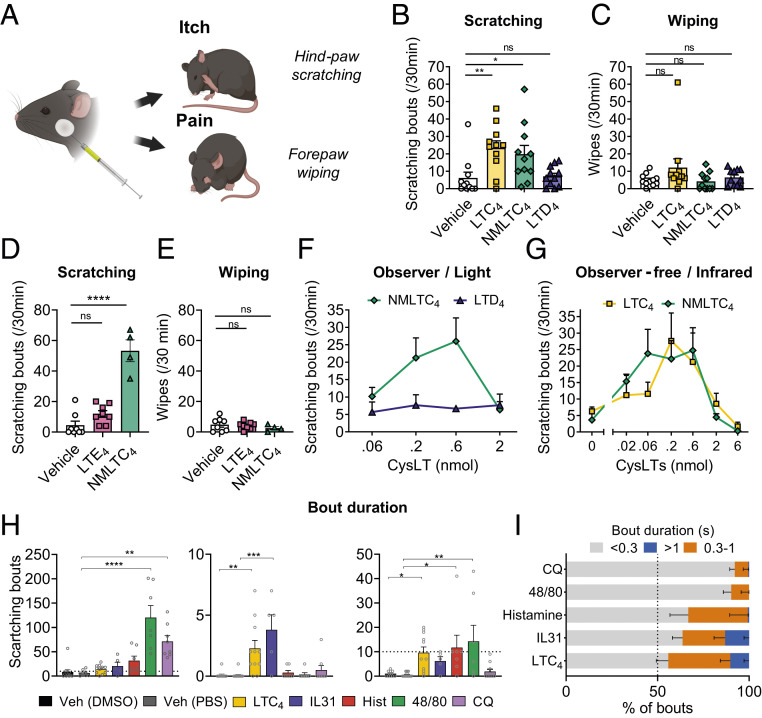Fig. 2.
LTC4 but not LTD4 or LTE4 induces dose-dependent acute itch behaviors. (A) Diagram of experimental design of acute itch/pain induction by intradermal injection of ligands in the cheek of the mice. (B) Scratching bouts in response to vehicle, LTC4, NMLTC4, and LTD4 at 0.6 nmol (n = 8 to 11). (C) Wiping responses, indicative of pain, to vehicle, LTC4, NMLTC4, and LTD4 at 0.6 nmol (n = 8 to 11). (D) Scratching bouts in response to vehicle, NMLTC4, and LTE4 at 0.6 nmol (n = 4 to 8). (E) Wiping responses, indicative of pain, to vehicle, LTE4, and NMLTC4 at 0.6 nmol (n = 4 to 8). (F) Scratching bouts’ dose responses to NMTLC4 and LTD4 were recorded for 30 min at different concentrations and scored live (n = 3 to 12). (G) Scratching bouts’ dose responses to LTC4 and NMLTC4 were recorded for 30 min at different concentrations (n = 6 to 8). (H and I) Analysis of kinetics and scratching bout duration differences in response to various pruritogens: LTC4 (0.6 nmol), IL-31 (0.02 nmol), histamine (100 μg), compound 48/80 (100 μg), CQ (200 μg), and vehicles (phosphate-buffered saline [PBS] and dimethyl sulfoxide [DMSO]). (H) Absolute numbers of bouts shorter than 0.3 s, bouts between 0.3 and 1 s, and bouts longer than 1 s. (I) Distribution of bouts according to their duration. Values presented as mean ± SEM. One-way ANOVA with Dunnett’s posttest. ns, nonsignificant (*P < 0.05; **P < 0.01; ***P < 0.001; ****P < 0.0001).

